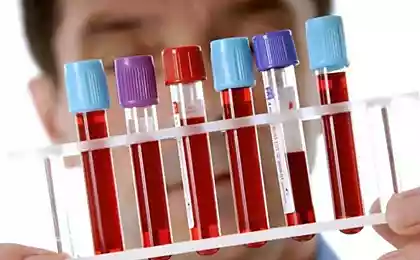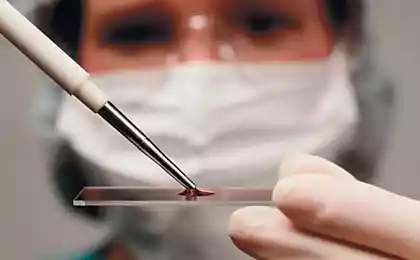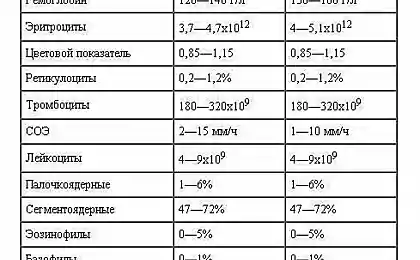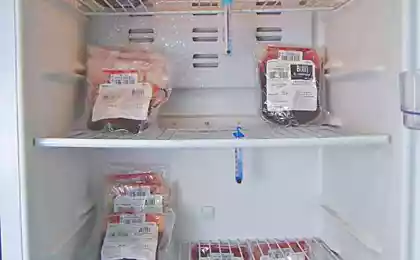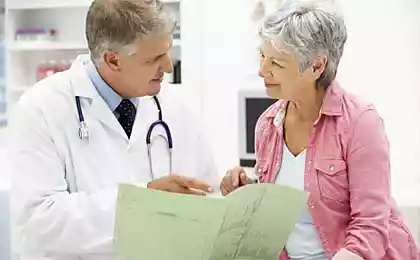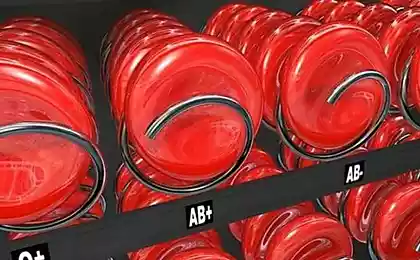497
General (clinical) blood test, decoding performance
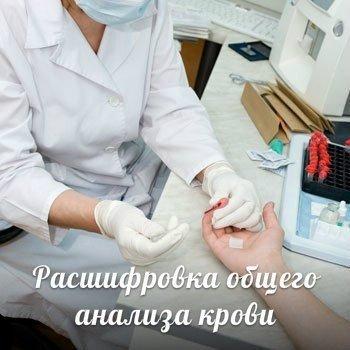
The value in medicine laboratory research plays an important role. Correctly assess the results of clinical and laboratory research and their efficient use in the practice of a doctor - a task of paramount importance
. General clinical blood test is one of the most important diagnostic methods. He subtly reflect changes in blood-forming organs when exposed to the body a variety of physiological and pathological factors often play a big role in the diagnosis and leading role in diseases of the hematopoietic system, to evaluate the effectiveness of therapy and prognosis of the disease.
Typically, studies using capillary blood, which is obtained as a result of the puncture finger disposable lancet or automatic
scalpels.
Clinical analysis of blood is desirable to carry out on an empty stomach. All studies are recommended repeated in the same time as morphological composition of the blood throughout the day subject to fluctuations.
The concept of general clinical blood test are: hemoglobin concentration, count the number of red blood cells and white blood cells, color index, erythrocyte sedimentation rate and counting leukogram. Additional research is to determine the clotting time, bleeding duration, counting the number of reticulocytes, platelets, etc.
Hemoglobin (Hb) in the blood analysis - is the main component of red blood cells, which transportitruet oxygen to organs and tissues. Its definition is not only diagnostic and prognostic value but, because pathological conditions that lead to a reduction of hemoglobin, leading to tissue hypoxia.
Normally, the content of Hb in the blood: women -120, 00 - 140, 00 g / l
male - 130 00 - 160, 00 g / l
Increased hemoglobin is observed at:
• primary and secondary eritremii;
• dehydration.
Reduced hemoglobin is detected when:
• anemia;
• overhydration.
Red blood cells (E) in the analysis of blood - red blood cells, which are involved in transport
oxygen in the air and tissue in the body supports biooxidation processes.
Normally, the content of (E) in the blood: Women - (3, 80-4, 50) x 1012 / l
men - (4, 50-5, 00) x 1012 / l
Increase (polycythemia) amount (E) is at:
• tumors;
• polycystic kidney;
• edema of the renal pelvis;
• the impact of corticosteroids;
• disease and Cushing's syndrome;
• treatment with steroids.
A slight increase in the relative amount of (E) may be due to blood clots as a result of burns, diarrhea, diuretics.
Reduction of (E) in the blood observed at:
• blood loss;
• anemia;
• pregnancy;
• reducing the intensity of the formation of red blood cells in the bone marrow;
• accelerated destruction of red blood cells;
• overhydration.
Leukocytes (L) - blood cells produced in the bone marrow and lymph nodes. Distinguish 5 types of leukocytes: granulocytes (neutrophils), eosinophils, basophils, monocytes and lymphocytes. The main function of (L) is to protect the body from alien microorganisms for him.
Normally, the content of (L) in the blood: (4 - 9) x 109 / l
Increase (leukocytosis) is at:
• acute inflammatory processes;
• purulent processes, sepsis;
• many infectious diseases of viral, bacterial, fungal and other etiologies;.
• malignant tumors;
• tissue injuries;
• myocardial infarction;
• pregnancy (last trimester);
• after giving birth - in feeding a child breast milk;
• after strenuous exercise.
To reduce (leukopenia) causes:
• aplasia, hypoplasia of the bone marrow;
• radiation sickness;
• exposure to ionizing radiation;
• typhoid;
• viral diseases;
• anaphylactic shock;
• Addison's disease - Birmera;
• collagen;
• under the influence of certain drugs.
Neutrophils are represented by two groups of granulocytes (stab (n / s) and segmented (s / s)). They have bactericidal, virusocidal and detoxification functions, considered second only to skin and mucous membranes of the body protective barrier.
Normally, the blood content: 47-78%
Increase (neutrophilia) is:
• inflammatory processes;
• myocardial infarction, lung;
• malignant neoplasms;
• Many infectious processes.
To decrease (neutropenia) lead:
• viral infections (hepatitis, measles, rubella, influenza, chickenpox, polio);
• infections caused by protozoa (Toxoplasma, malaria);
• post-infectious state;
• aplastic anemia;
• fungal infections;
• chronic bacterial infections (staphylococcal or streptococci, tuberculosis, brucellosis)
• during radiotherapy.
Eosinophils (E) - also have phagocytic properties, but this property is used primarily to participate in the allergic process. They phagocytose antigen-antibody complex formed mainly Ig E.
Normally, the content of (E): 0, 5 - 5, 0%
Increase (eosinophilia) observed at:
• allergic conditions (bronchitis asthma, allergic skin lesions, hay fever.);
• helminthic infestation (ascariasis, echinococcosis, giardiasis, trihenellez, strongyloidiasis);
• infectious diseases (in the stage of recovery);
• after the introduction of antibiotics;
• kollagenozah;
Decrease (hypoeosinophilia) occurs when:
• some acute infectious diseases (typhoid, dysentery);
• acute appendicitis;
• sepsis;
• injuries;
• burns;
• surgery;
• the first day of myocardial infarction.
Basophils (B) - are involved in allergic and inflammatory processes in the body
. Normally: 0 - 1%
Increased basophils happens when:
• allergic conditions;
• diseases of the blood system;
• acute inflammation of the liver;
• endocrine disorders;
• chronic inflammation in the digestive tract;
• ulcerative inflammation of the intestine;
• Hodgkin disease.
Decrease (B) occurs when:
• prolonged radiotherapy;
• acute infections;
• acute inflammation of the lungs;
• hyperthyroidism;
• stressful conditions.
The monocytes (M) - refers to agranulocytes. They belong to the mononuclear phagocyte system. They are removed from the body the dying cells, remnants of the destroyed cells, denatured protein, bacteria, and antigen-antibody complexes.
Normally, the content of monocytes in the blood: 3-11%
Increase (monocytosis) occurs when:
• infectious diseases (tuberculosis, syphilis, protozoal infections);
• certain blood diseases;
• malignant tumors;
• kollagenozah;
• surgery;
• during recovery from acute conditions.
Decrease (monotsitopeniya) found:
• after treatment with glucocorticoids;
• severe septic processes;
• typhoid fever.
Lymphocytes (L / F) are of two types of T and B lymphocytes. They are involved in recognition of antigens. T lymphocytes are involved in processes of cell-mediated immunity and B-lymphocytes -. Humoral immune processes
Normally, the content of (A / F) is 19 - 37%
Increase (lymphocytosis) found:
• After heavy physical labor;
• during menstruation;
• acute infectious diseases (chicken pox, rubella, whooping cough);
• viral infections (influenza, adenovirus and cytomegalovirus infection)
Decrease (lymphopenia) occurs when:
• secondary immune deficiencies;
• chlamydia;
• severe viral diseases;
• taking corticosteroids;
• malignant tumors;
• renal insufficiency;
• circulatory failure.
Color index (CP) - is the degree of saturation of hemoglobin in red blood cells pigment
. Normally 0, 90-1, 10
If it is less than 0, 80 - hypochromic anemia
. If 1, 80-1, 050 - normochromic anemia
. If more than 1, 10 - hyperchromic anemia
. In pathological conditions observed in parallel and about the same as a decrease in the number of red blood cells and hemoglobin.
The reduction unit (CPU) (0, 50-0, 70) is at:
• iron deficiency anemia;
• anemia of lead intoxication;
• anemia in pregnancy.
Increase (CPU) (1, 10 or more) is at:
• insufficiency of vitamin B12 in the body;
• Folic acid deficiency;
• cancer;
• gastric polyposis.
For proper evaluation unit (CPU) must take into account not only the number of red blood cells, but also their volume.
Erythrocyte sedimentation rate (ESR) - a non-specific indicator of the pathological state of the organism
. In normal newborns - 0-2mm / h
children up to 6 months - 12-17mm / h
women under 60 years - up to 12 mm / h men and 60 years - up to 8 mm / hr
women older than 60 years - up to 20 mm / h men over 60 years - up to 15 mm / h
Increased ESR occurs when:
• infectious and inflammatory diseases;
• kollagenozah;
• kidney disease, liver, endocrine disorders;
• pregnancy, postpartum menstruation;
• fractures;
• surgical interventions;
• anemia;
It can be increased and physiological conditions such as food intake (up to 25 mm / h), pregnancy (up to 45 mm / h).
Lowering the ESR is at:
• hyperbilirubinemia;
• raising the level of bile acids;
• chronic circulatory failure;
• hypofibrinogenaemia.









